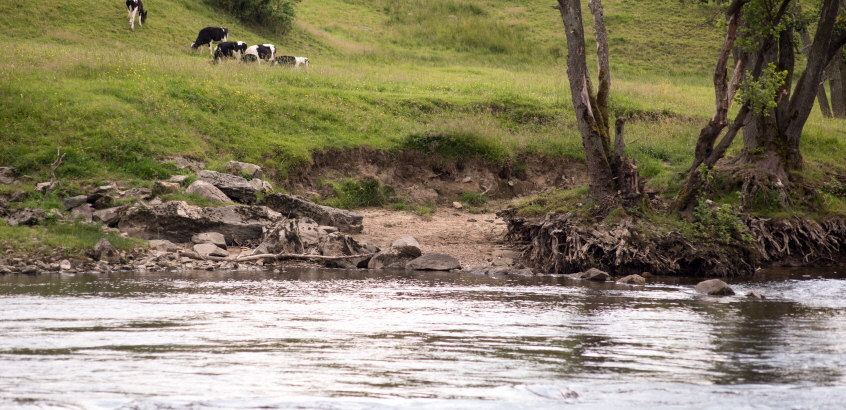 Photo: Torbjörn Thuresson, SGI
Photo: Torbjörn Thuresson, SGI
Landslide risks Säveån River Valley
The landslide risk analysis of the Säveån river valley has resulted in a general overview of the risk of landslides in both built and undeveloped areas, as well as in areas containing key societal infrastructure, under both present and future climate conditions.
A high landslide risk, i.e. where the probability of a landslide is substantial, and where the consequences of a landslide are serious for existing buildings and infrastructure, has been found for around 10 per cent of the land surface within the investigated area. This includes industrial facilities in Gothenburg and Partille, as well as many buildings and larger road and rail facilities (the E20 motorway and the Western Main Line railway) along the Säveån river valley, mainly in Partille and Lerum.
A moderate landslide risk is common in areas closest to the river bank along large sections of the river, equivalent to around 15 per cent of the land surface within the investigated area. The probability of a landslide in these areas is substantial, even though they lack key societal infrastructure. A major landslide in these areas could have secondary consequences, such as flooding of buildings and infrastructure upstream and downstream. These have not been considered in this analysis.
The largest part of the investigated area (around 50 per cent of the land surface) falls into the low landslide risk category.
Sensitivity to climate change in the future is deemed to be high for parts of Partille (Kåhög-Jonsered) and within the central parts of Lerum. Other areas are deemed to have a moderate or low level of sensitivity to climate impact.
Measures to reduce landslide risk
Identified areas with a high landslide risk should be investigated in more detail before decisions are taken regarding possible action. Extensive work on more detailed investigations and measures is being carried out by the municipalities in the identified risk areas. The risk of a landslide along watercourses can be alleviated by introducing measures to either mitigate the probability of a landslide and/or the consequences of a landslide. Measures to mitigate the probability are usually physical in the form of excavations, stabilization berms and river bank protection. Measures to reduce the consequences could include relocation of buildings or facilities.
Further development of a simplified method
The method used for landslide risk mapping of the Säveån river valley is a simplified approach based on the method employed in the Göta River Valley Investigation. This method has been adjusted for each of the watercourses investigated. In this investigation, for example, methodology development related to the classification of consequences has been extended to include polluted areas. The method for risk mapping that has been developed can be applied to mapping landslide risks along other watercourses. The methods developed for probability classification and consequence classification can be used independently of each other. The method for consequence classification can, for instance, be adapted for use when mapping other natural hazards.
More results
The final report SGI Publication 38-1E " Landslide Risks in a Changing Climate – Säveån River Valley. Part 1: Map Report and Summary of Results (PDF, 21.56 MB)"
In the map viewing service you will find GIS layers with probability, consequence and landslide risk maps along the river, as well as further location-specific information. Maps and menus are in Swedish.

